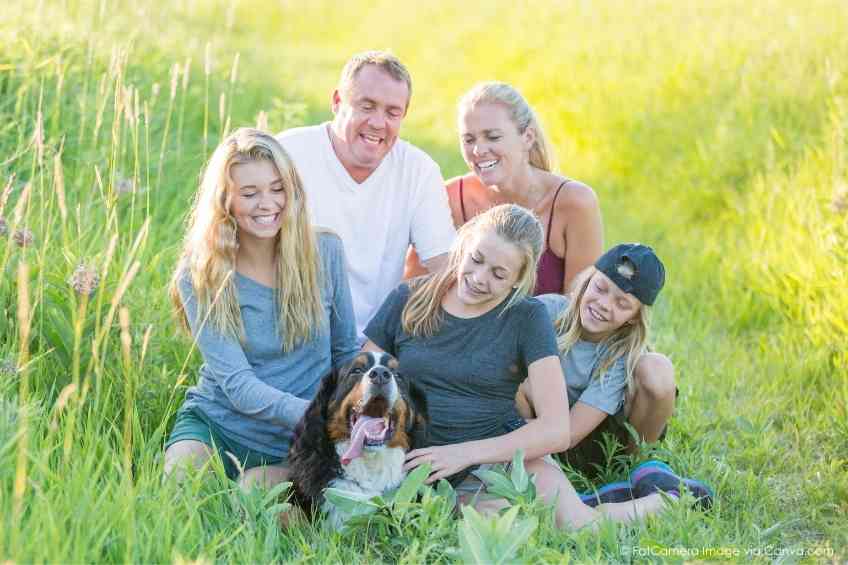Dogs may be man’s best friend for good reason. These furry friends can be a source of mental and physical comfort and well-being. But building a mutually beneficial person-pooch relationship that goes beyond just getting endless lick-smooches takes a bit of work before and after identifying a dog mate. People need to pick the right dog for them for the right reasons. This means going beyond picking a pooch based solely on their cuteness factor. Heather Mishefske knows more than a thing or two about bonding with dogs. She’s a certified dog trainer, the owner of the training service emBARK and a board member of the Association of Professional Dog Trainers, among many other things. She spoke recently with WellWell on how to pick, train and bond with your perfect pooch.
What is your background?
I am a certified professional dog trainer. I’m also a certified behavior consultant. I mentioned those things because our field currently has no licensing requirements. Anyone can call themselves a dog trainer, so it’s important to seek out someone that’s credentialed. There’s a lot of information out there, and sometimes it’s hard to wade through what the internet tells you. Seeking out someone who is credentialed and has a certification of some sort behind their name is really important when you’re seeking out a dog trainer.
Is it true there are dog people? What does that mean?
We actually have had staff at emBARK that have come in with no dog experience, which blows my mind. They’re just natural with dogs. I always credit myself to my genetics because both of my grandmothers were huge animal lovers. If your family had dogs and it’s something you’ve had in the home, you’re comfortable with them. It’s something that has a lot of benefits. There are people who are just natural-born dog people. On the flip side of that, there are people who have never had a dog and then maybe cautiously bring one into their lives and become dog people. We’ve had a lot of people in classes who are retired, and they’ve said I’ve never had a dog, but I feel like now is the time I can really commit to the training and walking and all of those pieces. They bring a dog into their home and then say holy cow, I can’t believe I’ve never done this before. It’s so fantastic to share your life with a creature. But there are some people who are just not animal people in general. There are a lot of things that come with caring for an animal, and not all are pleasant, like cleaning up after them and house potty training a puppy. Sometimes, people will shy away from the husbandry aspect, but I think people are either born dog people or not.
What are the benefits on either a physical or emotional level?
We always say that our dogs have a side job as our own therapy dogs, even if they’re not certified. The list of benefits is endless. Dogs, in particular, have emotional benefits. There are physical benefits as well. There’s a host of things for caring for an animal, like going outside. It is a being that forces you to care for it because they don’t have opposable thumbs. They can’t let themselves out. Most people will really identify that dogs will get them moving because they need to go for walks and outside to potty. Look at all the people you meet when you’re out with that dog. People will naturally approach you when you have a dog. That starts a conversation rolling. There might be a person in your neighborhood you can make a connection with. All of the benefits of having a dog roll into one another. The dogs get you out and moving. For some people, it forces them to get up in the morning because they have an animal in their house and have to go outside. The second piece is the emotional side of it. Your dog is going to be really excited to see you, and what a happy thing to come home to. You’ve had a hard day at work, or a friend you had lunch with that was emotional, and you come home to see this creature who is practically out of their body, being happy to see you. That’s something you don’t get from friends or children. Maybe we get a quick hug and welcome home, but not 10 minutes of exuberant happiness because you were missing and just returned to the house. What a fantastic cascade of all those feel-good hormones. The literature tells us you get the dopamine hits, oxytocin and all the feel-good neurotransmitters when we interact with something that loves us that much. People often pick dog ownership for an emotional and physical connection.
When a dog licks your face, what do you think that means?
Licking is one of the things that we look at when we look at that face, especially the faces of dogs. It’s often an appeasement signal. They’re trying to appease you, whether they’re worried about something or they’re happy, depending on what the rest of their body is doing. Some of the dogs will do it as a self-soothing behavior. They will lick part of you, like legs or feet. A lot of dogs do that as an appeasing gesture.
On a physical level, does this change with age, either the dog or the person?
We get pets for a multitude of reasons throughout our lifetime. A lot of people who are in their 20s, they’re moving out of the home. It is the first pet they’re going to get. They’re getting a pet so they can hike, go to the brewery and have someone to walk with. A lot of single women will get a dog just to have something in their house and have something they can walk with at night. Their parameters for what they’re looking for could be different than someone who’s retired and looking for a dog to take a walk with and be at home with them. The reasons for getting them can probably vary quite a bit, and what goes with that is age. Dogs aren’t really fully developed physically and emotionally until they’re about three years old. Those first couple of years have a lot higher requirements of exercise, needs being met and training. All of that is compressed in those first couple of years. When people look at dogs, they might look at younger dogs needing more time and resources, and older dogs, time isn’t as important because they’re sleeping more. They don’t have the exercise requirements like a young dog. Finding a good mesh with your lifestyle, resources and needs is always important to facilitate the best relationship you can have with them.
How do people go about choosing a dog if they’re not familiar with breeds?
I do behavior consulting all day, every day. The reason that I’m called in or that I’m sought out is because there is some particular behavior that’s going on within that family that they need help problem solving, whether it doesn’t like men, children or other dogs. Maybe it has a lot of anxiety. The reason people will pick a dog is coat, color and cuteness. That’s soothing visually, but it’s so important to consider the dog’s history and breed. Reputable breeders who know their dogs well can tell a lot of characteristics from birth. Everyone needs to consider this. Breed is really, really important to what your choice is. The reason for that is that any breed comes to you looking a certain way because they carry these genetics to do the job they were bred to do.
Are shelters equipped to handle questions and provide guidance on dogs?
It depends. Some shelters I work with have behavior-savvy staff who can see behaviors that might be maladaptive for a family. They’re really looking at making sure that the needs of the dog are met and the needs of the family. That’s such a hard task; meshing is a hard task. There are some shelters that aren’t equipped. They might not have someone who’s got the behavior chops to be able to say this might not be a good fit. I often look at a lot of rescue sites and a lot of shelter sites because I have a lot of people who are looking for dogs. There’s some wording in the descriptions that someone who has been in this field for a long time can often pick through. That’s not to say that it can’t be changed. People who do behavior work like myself, like behavior consultants and veterinary behaviorists, that’s what we do for a living. We work to help that dog mesh well with that family. Asking the right questions might be the best way to go into a scenario like that. How have you seen this dog around the shelter setting? Have they been tested around cats? Sometimes, these dogs are brought in as strays, picked up on the streets or surrendered. Their behavior history isn’t always given to them in a lot of scenarios. Dogs that are scared need a lot of help, encouragement and behavioral modification when they get into a home. Dogs that are scared when pushed get defensive, and that’s when teeth come out. If you’re taking on a dog that’s scared, find qualified people to help. That dog could have a fantastic life if we help them understand that the world isn’t scary. If you really consider the life that this dog is going to live and ask questions surrounding what that lifestyle looks like, that will help people proceed with a dog that will be the best fit for their family.
What about dealing with breeders?
It’s just like the shelter world. There are great shelters and rescues. In the last 10 years, there have been a lot of rescues that have popped out that don’t really support those dogs in their whole life, and that angers me because I feel like if you’re pulling a dog from a situation and you’re homing it with this family, you should be there to support that family through its life. That’s what we do as breeders. If any of my puppies at any point in their life have to come back to me and have behavior issues, yes, bring them back. I will support you until the day that dog is gone, but that’s not true for a lot of people. A reputable breeder will take that dog back at any point in its life. It could be thirteen years old and have cancer, and you can’t afford to treat it. That dog’s coming back. If they purposely put that animal’s life into the world, they should be supporting it their entire life. That’s a question that you should be asking if you’re purchasing the dog. It doesn’t happen often because those breeders are really smart about placing dogs in homes that are a good fit. It’s a good piece of mind that if anything ever happens, that dog isn’t going to end up in the hands of someone who doesn’t know or understand the breed or the mix. If they say no, I would move on. That’s unethical in so many ways.
What’s the best way for people to get a handle on breed history?
Usually, for breeds, there is a parent breed club. For example, the Chesapeake Bay Retriever Club of America has a website. They have organizations and often have a rescue coordinator. If you’re looking for a Chessie you should start with their parent breed club, there’s always a rescue tab, and it will tell you some more local rescue groups. They’re going to be able to give you a lot of information about this dog breed, a lot of information on the isms and the quirks and the great parts about this breed. That’s a good place to start. Those of us who are involved in rescue for the breed are so passionate about it.
What are the things you really need to begin training?
There’s been a myth that puppies are like a blank slate, but they’re not. We just talked about how genetics are very strong. Your puppy is coming to you preloaded with some genetics. There are a couple of developmental periods that will fade when a puppy becomes a teenager. Puppies are puppies until about five or six months of age, and then they’re teenagers until they’re two and a half to three. Larger dogs are going to be maturing slower, which I know feels very overwhelming, but that’s something to consider when looking at a dog. The teenage brain is still developing in the prefrontal cortex. Rational, logical thinking is not going to be developed until they’re older. We think a year-old dog is grown, but it is not. There are a lot of things you want to smoosh into that puppy experience before they become a teenager. We focus so much on training, like sit down, come when called and stay put. Experiences and building confidence as a puppy are much more important than teaching them hard skills. Teaching them how to cope with stress, teaching them a problem and how to solve it, teaching them different surfaces and experiences and different people to meet. Those things build a puppy that is confident, so when you get into the teenage months, you can focus more on the skill building. The teenage puppy breeding ebbs and flows through the teenage months. Some days you get a brilliant dog and the next day, you get not so smart. It’s important that we still teach skills, but we start the foundation for them. The more important part is to build confidence because you have a limited time window in which to do that. For puppies, it’s really important to find someone who is credentialed and qualified, so they understand the neurological development of puppies so that they’re catering and tailoring the training.
What about confidence? Is that a matter of socialization?
It depends, yes. But socialization doesn’t always mean your dogs need to meet all the people and meet all of the things. The dog needs to hang out with you and enjoy your company. It goes back to genetics. A lot of people want their dog to be like the golden retriever who loves everything 24/7, but that’s not normal for a German shepherd. They’re bred to be more aloof. When we look at socialization, the experience for each dog might be different, but confidence-building might mean, can you put your body up on this thing? Can you walk on bubble wrap? Can you walk on a metal surface? Some puppies will set foot on that and go, I can’t walk on that piece of metal. I might die right now. Then they try it, and they’re successful. We build confidence in learners by having them problem-solve. Experiences where you are giving them choice and consent are probably the best ways we can build confidence in puppies. It’s important to teach them to be around people and around other dogs in environments, which doesn’t always mean interacting. It means ignoring them and hanging out.
What’s the biggest mistake that people make when training?
I think a lot of people push really fast. We think about our dogs, and I always say the three-year-old dog is finally mentally and physically mature. The neural pathways are finally solidifying in their brain. They have an expectation that our one-year-old dog should know all these things, but our one-year-old dog is like an eight-year-old. The biggest mistake we make is we have too many expectations without putting the work in. We fail our dogs a lot of the time because we have expectations that if they can come when called off-leash in the fenced backyard, we can take them to the cabin on 40 acres and they’re going to come back to us. The other misconception in dog training is dominance theory being a thing.
What is the dominant theory?
A lot of people think in order to raise a dog that is socially appropriate, they need to be this very dominant figure in their life and control all of the resources. That leads to more physical training methods and punishment. It’s easy to train dogs without a dominant persona over them. If you look at any relationship in your life, you get good relationships because of good communication. We are respectful of that learning style and the learning. The best relationships we have with any creature are ones that are built out of respect and give that learner some choice and control over their life.
Can you teach an old dog new tricks?
Yes, learning is learning. The process in which learning occurs is the same across species. A lot of the dogs might be older. It always depends on their learning history and reinforcement history around certain contexts. We can unravel that some things are more work, but it can always be done.

About Heather Mishefske
Heather Mishefske is an experienced and well-versed dog professional. She is a certified dog trainer (CPDT-KA) and a certified canine behavior consultant (CBCC-KA). She is also a director of the Association of Professional Dog Trainers (APDT) and a trustee of the APDT Foundation. Voted as one of the nation’s top dog trainers by Sniffspot, she is also the owner of emBARK, a renowned dog training facility in Eau Claire, Wisconsin.
To learn more, please visit embark.com.













